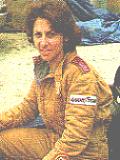

|
www.thundervalleyracing.com
|
|
Oil is Just Oil |
|||||||||||||
|
Part
2 of a series of technical articles
Most oils on the market provide adequate protection. Ifyou are satisfied with adequate lubricant protection then "oil is just oil". If you are looking for increased protection, then you will need to research the differences in products available. Engine oil has four main functions: Every high quality motor oil will perform these functions when the oil is new. But the oil begins to wear out from the first moment of use. The heat produced by the motor in operation acts much in the same way as the heat in the refining process. At 239F, oil starts to breakdown, and continues molecular breakdown into lighter and heavier particles. Light molecules escape from the engine as a gas. Heavy molecules remain in the engine to form sludge, gum and varnish, preventing heat dissipation. Paraffin based oils have the tendency to precipitate out the paraffin and deposit it on metal surfaces in the engine. Ash based oils form less sludge. The oil is also squeezed so thin from extreme pressures and sheer stress that the molecular chains in the oil film is broken. To protect against this thermal and viscosity breakdown, oil manufacturers have developed extensive additive packages. These packages contain:
The viscosity grade or thickness of oil refers to a measurement of its resistance to flow. The higher the grade, the higher the resistance, the thicker the oil. The letter "W" as in 10W, 20W refers to a winter grade measured at zero F. Oils without the letter "W" are flow tested at 212F and are meant for warmer weather conditions. Operating an engine in both hot and cold condition makes it impossible to use a single viscosity grade, hence multi-grade oils. SYNTHETICS Mineral oils are all formed from a base crude oil. Synthetic oil is petroleum oil that has been de-constructed into its various components and then re-assembled into a lubricant with specific design characteristics. Oil engineers remove most of the undesirable waxy components and build a lubricant that is very stable at higher temperatures. Multi-grade mineral oils have negative viscosity gradients. The hotter they get, the lower their viscosity becomes. Adding a viscosity improver (VI) , a long chain polymer, increases the viscosity of the oil as it gets hotter. The problem is, where the oil does its work at the bearing clearances it experiences a velocity gradient. At the bearing the oil is standing still; at the shaft the oil is moving with the shaft. The oil is in constant shear stress between the two surfaces. When the RPM's get high enough, the shear stress breaks down the VI polymer chains, making them shorter and reducing the viscosity of the oil film. Straight weight oils, and synthetics maintain the same viscosity throughout their use. Synthetics having the advantage of being multi-grade. Because synthetic oil is petroleum oil there is no compatibility problem with mixing with mineral oil.
FILTRATION Equally important in reducing the level of impurities and wear in the engine is proper filtration. Just as with oil, oil filters are not all created equally. There are three basic kinds of filters, each designed for a specific job. The pleated paper filter uses a rigid sheet of filtering paper folded accordion-style, inserted into a metal housing. There is a limited life to this filter both in clogging from contamination and deterioration of the paper. These filters are supplied either as a spin on or cartridge insert depending on the type of car. The full-depth spin-on filter utilizes a filtering material in the form of a thick blanket of fiber, which filters through the full depth of the material, in contrast to the surface filtration of the paper element. By-pass filters have the ability to filter out minute particles from the oil down to one micron. Full-depth filters out 4 or 5 microns, paper 25-40 microns. There are types that use a washable ultra-fine steel element, that can be used as a replacement filter or in addition to the spin-on. Examining the inside of the filter can give clues to the engines status, by looking for contaminants. Be careful when opening the housing that metal chips from the case are nor intermixed with debris from the inside the filter. Cut the paper element and pull it apart. Look for gummy deposits, gasket material of rubber from the hoses. Gold colored flake can be bearing material. Use a magnet to differentiate ferrous from other metals. Take samples to your engine builder for reference. Also, since the object of filtration is clean oil, remember to clean the air cleaner.
|
|
Home
| Member Area
|Meet the Racers
| Features | News Articles
Sponsorship
| Press Room
| Resources
| About Us
| Contact Us
|

